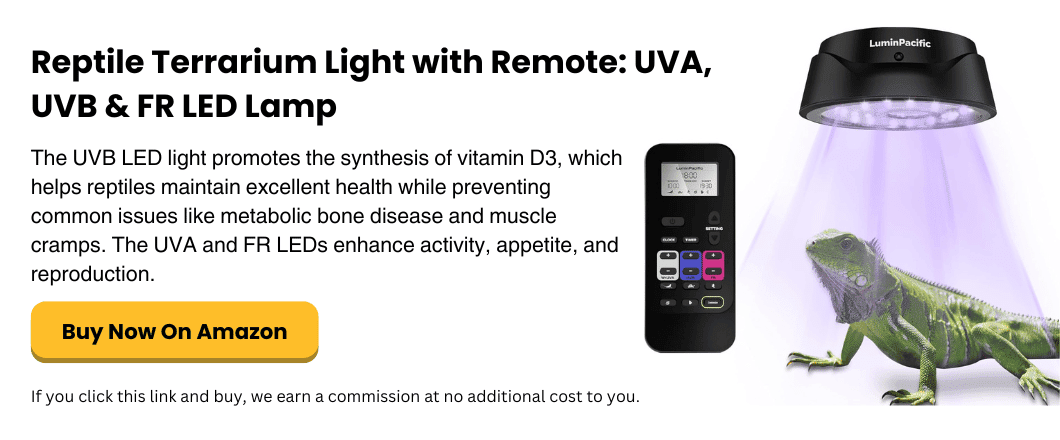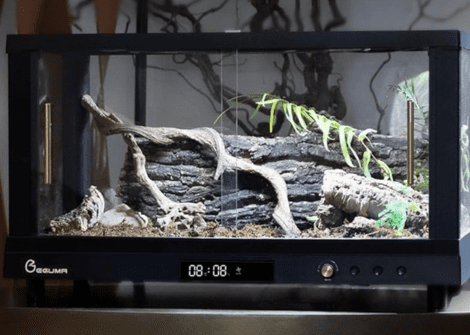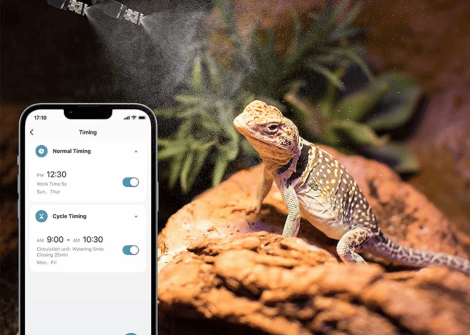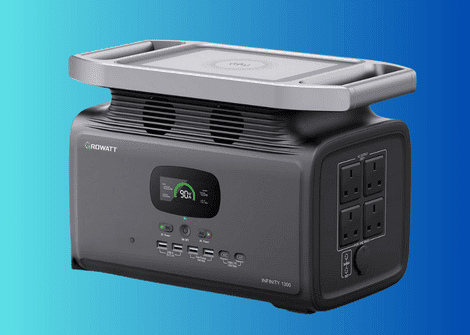The Best Smart Thermometers for Reptile Tanks
Maintaining the perfect temperature in your reptile’s habitat isn’t just important—it’s absolutely critical for their health, digestion, and overall well-being. Traditional analog thermometers can leave you guessing, but smart thermometers take the uncertainty out of reptile care by providing precise, real-time monitoring that you can check from anywhere.
Whether you’re caring for a bearded dragon, ball python, leopard gecko, or any other cold-blooded companion, investing in a quality smart thermometer will give you peace of mind and help ensure your pet thrives in their carefully controlled environment.
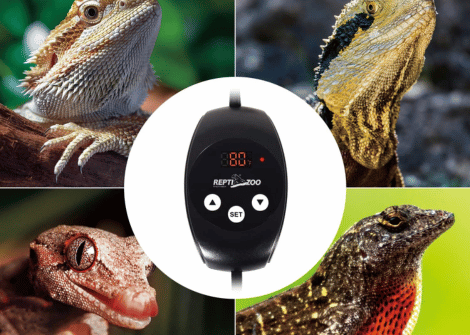
Table of Contents
Why Smart Thermometers Are Essential For Reptile Care
Key Features To Look For In Smart Reptile Tank Thermometers
Top Smart Thermometer Recommendations
Setting Up Your Smart Thermometer System
Troubleshooting Common Temperature Issues
Maximizing The Benefits Of Temperature Data
Frequently Asked Questions
Investing In Your Reptile’s Health And Future
Why Smart Thermometers Are Essential For Reptile Care
Smart thermometers offer several advantages over traditional temperature monitoring methods that make them invaluable for serious reptile keepers.
Unlike basic digital or analog thermometers that only show current readings, smart devices continuously monitor conditions and can alert you to dangerous temperature fluctuations before they become life-threatening.
Reptiles are ectothermic, meaning they rely entirely on external heat sources to regulate their body temperature. Even small temperature variations can impact their immune system, appetite, and ability to properly digest food. A smart thermometer acts as your vigilant assistant, tracking these crucial environmental factors 24/7 and sending notifications to your smartphone if conditions move outside safe parameters.
Many smart thermometers also log historical data, allowing you to identify patterns and optimize your heating setup over time. This information becomes especially valuable when troubleshooting health issues with your veterinarian or when fine-tuning conditions for breeding projects.
When choosing a smart thermometer for your reptile enclosure, several features should be at the top of your priority list.
Accuracy is paramount—look for devices that maintain precision within ±1°F, as reptiles can be sensitive to even small temperature variations.
Wireless connectivity is another essential feature, allowing you to monitor conditions remotely through smartphone apps. The best models offer both Wi-Fi and Bluetooth connectivity options, ensuring you stay connected even if one connection method fails.
Consider the probe design carefully. Some thermometers come with multiple probes, enabling you to monitor both basking and cool-side temperatures simultaneously. Waterproof or water-resistant probes are crucial for humid environments or if you’re monitoring aquatic or semi-aquatic species.
Battery life also matters significantly, especially if you’re using wireless models. Look for devices that offer at least several months of battery life, with low-battery alerts to prevent unexpected monitoring gaps. Some premium models include rechargeable batteries or even solar charging capabilities.
Smart Thermometer Recommendations
The advantages of smart terrarium lighting extend well beyond convenience.
Energy efficiency is a significant benefit, as LED-based smart systems typically consume 60-80% less electricity than traditional incandescent or fluorescent bulbs while lasting substantially longer. This translates to meaningful savings on your electricity bill over time.
Improved reptile health is perhaps the most important advantage. Smart systems can provide more accurate UV output, better color rendering, and more natural light cycles. Many reptile owners report increased activity levels, better feeding responses, and more natural behaviors after switching to smart lighting systems.
The automation features eliminate human error and ensure consistency. You’ll never forget to turn lights on or off, and your reptiles will receive reliable light cycles regardless of your schedule. This is particularly valuable for breeding programs where precise photoperiods are crucial for reproductive success.
Data logging capabilities in many smart systems allow you to track lighting patterns, energy usage, and even correlate lighting changes with observed behaviors. This information can be invaluable for optimizing your setup and sharing insights with veterinarians or fellow reptile enthusiasts.
Setting Up Your Smart Thermometer System
Proper placement of your smart thermometer probes is crucial for obtaining accurate, representative readings of your reptile’s environment. Position one probe in the basking area to monitor your heat source effectiveness, and place a second probe on the cooler side of the enclosure to ensure you’re maintaining an appropriate temperature gradient.
Avoid placing probes directly under heat lamps or on surfaces that receive direct heating, as this can result in artificially high readings that don’t reflect the actual air temperature your reptile experiences. Instead, position probes at the same level where your reptile spends most of their time—typically mid-level in the enclosure for arboreal species or near the substrate for terrestrial animals.
When configuring your smartphone app, set alert parameters based on your specific reptile’s requirements. Most tropical species need temperatures between 75-85°F on the cool side and 88-95°F in the basking area, while desert species may require higher ranges. Research your particular species’ needs and set your alerts about 5°F outside these ranges to catch problems before they become dangerous.
Troubleshooting Common Temperature Issues
Smart thermometers excel at helping you identify and resolve temperature problems quickly. If you’re receiving frequent alerts about temperature fluctuations, first check for obvious causes like burned-out bulbs, faulty thermostats, or blocked ventilation.
Sudden temperature drops often indicate heating equipment failure, while gradual changes might suggest seasonal ambient temperature shifts requiring heating adjustments. Many reptile keepers find that room temperature changes throughout the year necessitate different wattage bulbs or additional heating elements during colder months.
If your readings seem inconsistent, verify probe placement and consider calibrating your device. Most quality smart thermometers maintain accuracy over time, but occasional calibration checks using a known accurate reference thermometer can help ensure continued precision.
Maximizing The Benefits Of Temperature Data
The historical data provided by smart thermometers offers insights that can significantly improve your reptile care.
Review your temperature logs regularly to identify patterns—you might discover that your heating system struggles during certain times of day or that ambient temperature changes affect your setup more than expected.
Use this data to optimize your heating schedule if you’re using programmable equipment, or to justify upgrades to more consistent heating solutions.
When visiting your reptile veterinarian, temperature logs can provide valuable information about your husbandry practices and help identify potential environmental factors contributing to health issues.
Frequently Asked Questions
If you’re still not sure about buying a smart thermometer, or maybe you still have some questions, here are the most commonly asked FAQs, with answers. We hope they help!
How accurate are smart thermometers compared to traditional thermometers?
Quality smart thermometers are typically far more accurate than basic analog or digital models, as they have a precision within ±1-2°F. Traditional stick-on thermometers, on the other hand, can be off by 5-10°F, while basic digital models may drift over time.
Smart thermometers use calibrated sensors and often include automatic calibration features to maintain accuracy at all times.
Do I need Wi-fi to use a smart reptile thermometer?
Not necessarily. Many smart thermometers work with Bluetooth alone, allowing you to check readings when you’re home.
However, Wi-Fi connectivity enables remote monitoring, alerts when you’re away, and cloud data storage. Some models offer both options, giving you flexibility based on your needs and setup.
How long do the batteries last in a smart reptile thermometer?
Battery life varies by model and usage, but most quality devices last 6-12 months on a single set of batteries.
Factors affecting battery life include how often the device transmits data, ambient temperature, and whether you’re using Wi-Fi or Bluetooth connectivity. Many devices send low-battery alerts well before they stop working.
Can smart thermometers handle high humidity environments?
Most reputable smart thermometers are designed to handle typical reptile enclosure conditions, including high humidity environments needed for tropical species.
Look for devices with IP65 or higher ratings for moisture resistance. The probe sensors are typically more robust than the main unit, which should be positioned outside the enclosure when possible.
Will the wireless signal interfere with my reptile’s behavior or health?
No, the radio frequencies used by smart thermometers (Bluetooth and Wi-Fi) are extremely low power and won’t affect reptile behavior.
These are the same frequencies used by common household devices like phones and routers. The transmission power is minimal and poses no health risks to reptiles or humans.
How many probes do I need for my reptile tank?
For most setups, two probes are ideal—one for the basking area and one for the cool side. This allows you to monitor the temperature gradient, which is crucial for reptile health. Larger enclosures or those with complex heating systems may benefit from additional probes. Single-probe systems work for smaller tanks or as a starting point.
What happens if my smart thermometer loses Wi-fi connection?
Most smart thermometers continue logging data locally even when disconnected from your phone or Wi-Fi. When connection resumes, the stored data syncs automatically. However, you won’t receive real-time alerts during disconnection periods, so it’s important to check your setup regularly and ensure stable connectivity.
Are smart thermometers worth the extra cost compared to a traditional thermometer?
For serious reptile keepers, yes. The ability to receive instant alerts about temperature problems, track long-term trends, and monitor remotely can prevent health issues that would cost far more to treat.
The peace of mind alone justifies the investment for most owners, especially those with valuable or sensitive species.
Investing In Your Reptile's Health And Future
Smart thermometers represent a small investment that can prevent major health problems and give you confidence in your reptile care practices. By providing continuous monitoring, instant alerts, and valuable historical data, these devices help ensure your scaly companions enjoy the stable, appropriate temperatures they need to thrive.
Whether you choose a basic model for simple monitoring or invest in a professional-grade system with multiple probes and advanced features, the peace of mind and improved animal welfare that smart thermometers provide make them an essential tool for any serious reptile keeper.
Your reptile’s health and your own peace of mind are worth this worthwhile investment in modern monitoring technology.
More Reading
A smart all-in-one terrarium is a great choice because it combines lighting, heating, and humidity control in one easy setup. Our guide shows how it makes caring for your reptile easy, and how it saves you time.
A smart misting system maintains the proper humidity level in your terrarium. It delivers the right moisture at the right time, helping your pet stay comfortable and healthy, But is it the right choice for you and your pet?
Smart power backup systems automatically maintain critical heating and lighting during outages. They send smartphone alerts to keep you updated, and can keep terrariums running for hours or even days.

